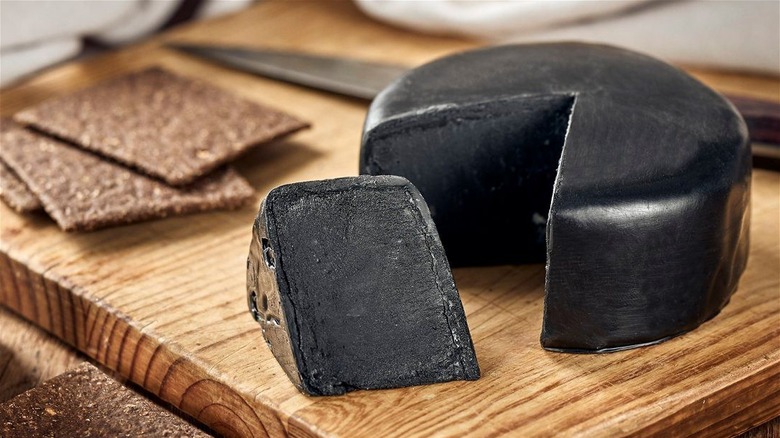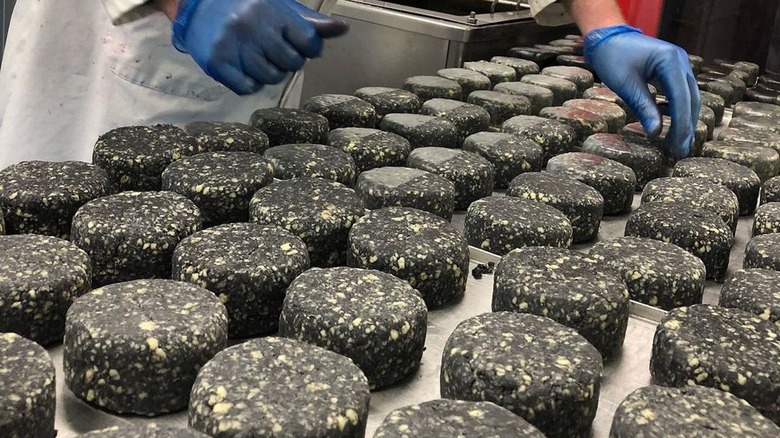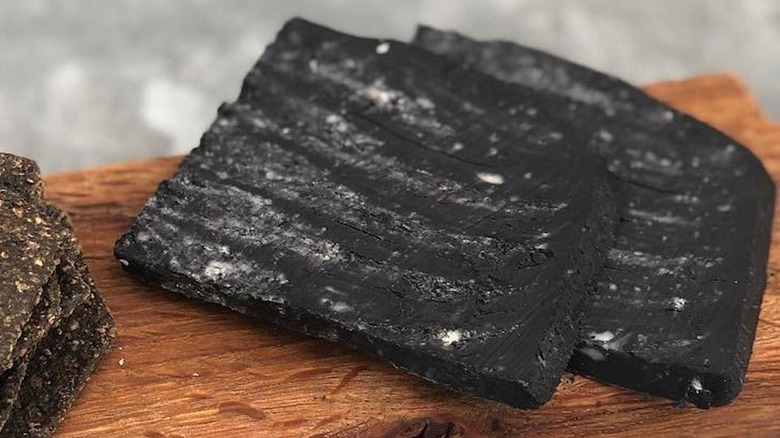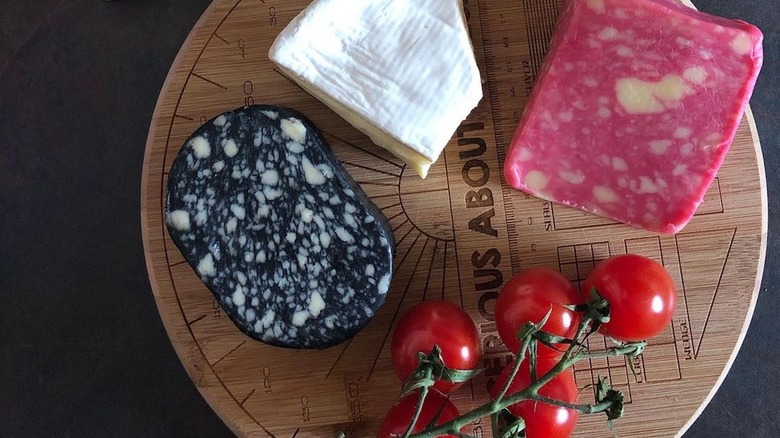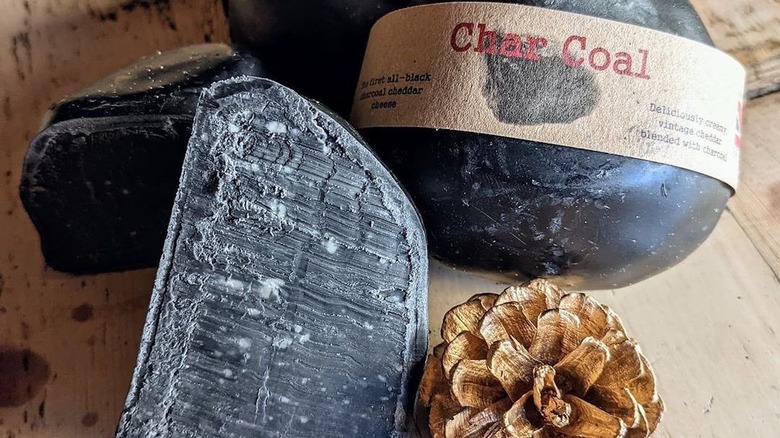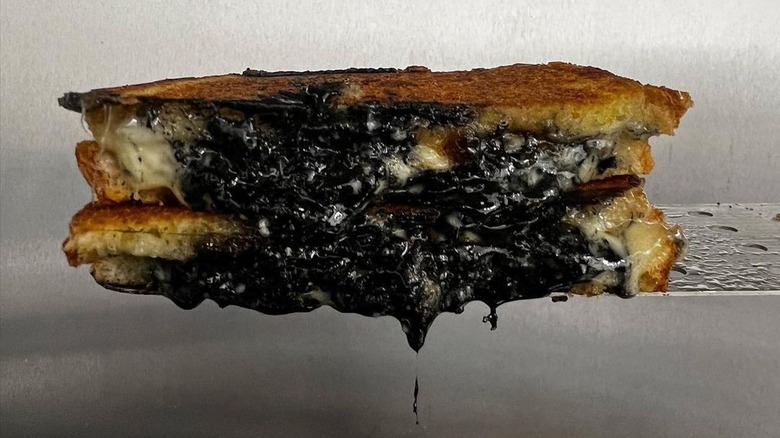Charcoal Cheddar Is A Unique Addition To Your Cheese Board
A modern culinary marvel, charcoal cheddar has emerged as a captivating and innovative addition to cheese boards. This avant-garde fromage gets its name from an infusion of activated charcoal, which imparts a stunning black hue to traditional cheddar cheese. The result is a striking contrast that sets it apart from other varieties and makes it a fun conversation starter at any gathering.
The charm of charcoal cheddar lies not only in its distinctive appearance but also in its intriguing flavor profile. The infusion of activated charcoal doesn't just create a captivating color; It also supplies a subtle smokiness that augments the familiar richness of cheddar. This dynamic combo makes charcoal cheddar a stand-out choice for those seeking an adventurous taste experience. For instance, when placed on a cheese board, the dark charcoal cheddar transforms the arrangement into a work of art. The striking contrast of colors showcases the host's creativity and willingness to push the boundaries of gastronomy.
How is charcoal cheddar made?
Charcoal cheddar is crafted through a meticulous process that infuses activated charcoal into the traditional cheddar-making technique. The journey begins with pasteurized milk, which is then inoculated with bacteria cultures to initiate fermentation. As the milk acidifies, the enzyme rennet is added to coagulate it, forming Little Miss Muffet's favorite repast — curds and whey. The curds are carefully cut to release more whey and then heated to further expel moisture.
Of course, the feature that sets this cheddar apart is the introduction of activated charcoal, a porous form of carbon with remarkable adsorption properties. The activated charcoal is thoroughly mixed into the curds, imbuing the cheese with its signature pitch-black color. This step requires precision to ensure even distribution while not overpowering the flavor.
After mixing, the curds are pressed to remove excess whey. Salt is then added to enhance the bite and aid preservation. The curds are shaped into waxed truckle molds (which contribute to the cheddar cheese's recognizable round form) to keep the cheese fresh. The cheese is allowed to age over a defined period, which can range from several weeks to months. While aging, the flavors deepen and mature, leading to the development of a unique taste profile that combines the nuttiness of cheddar with earthy notes from the activated charcoal. Once the aging process is complete, the cheese wheels are typically coated to preserve their quality.
What does charcoal cheddar taste like?
Charcoal cheddar boasts a distinct profile that sets it apart from traditional cheddars. The infusion of activated charcoal imparts a slight yet noticeable influence on both the taste and aroma. While the precise taste can vary depending on factors such as the type of charcoal used and the cheese's aging period, some general characteristics can be expected. At its core, charcoal cheddar retains the creamy, mild, tangy attributes commonly associated with cheddar cheeses. However, the insertion of activated charcoal introduces intriguing undertones.
The charcoal contributes a smokiness, which can evoke sensations akin to those found in foods cooked over open flames. Furthermore, the activated charcoal might contribute an earthy quality reminiscent of minerals or the essence of the environment from which the charcoal was sourced. This earthiness can be delicate, enhancing the cheese's complexity without overwhelming the palate.
It's important to understand that the primary goal of charcoal cheddar is not to create a stifling flavor but rather to present a well-balanced and visually captivating cheese. The taste is a harmony of cheddar's familiar attributes with the influences of charcoal embers. This interplay results in a cheese that delightfully engages the senses, making charcoal cheddar a sought-after choice for those seeking a novel and memorable eating experience.
What can you eat charcoal cheddar with?
Enjoying charcoal cheddar is a taste adventure that can be savored in various ways. For starters, charcoal cheddar makes for an eye-catching addition to charcuterie boards and cheese platters. The contrasting colors and flavors create an engaging and diverse tasting experience.
Try adding charcoal cheddar to sandwiches and burgers for contrasting layers of taste and color. The creamy texture and delicate, fire-kissed notes complement a variety of foods, from roasted vegetables to grilled meats. Melting charcoal cheddar into dishes such as macaroni and cheese and quesadillas yields a twist to go-to comfort meals. Charcoal cheddar's complexity pairs well with beverages such as red wines and craft beers. You can further elevate charcoal cheddar by pairing it with gourmet noshes like artisanal bread, figs, dates, or truffle-infused products. Feel free to get creative in the kitchen by incorporating charcoal cheddar into savory tarts, frittatas, or even soufflé.
Where can you find charcoal cheddar?
Charcoal cheddar can often be found in specialty cheese shops, gourmet food stores, and artisanal markets, as well as online retailers that carry exclusively curated products. Its availability may vary depending on your location and the culinary trends of the region. Larger cities and urban centers are more likely to offer a wide selection of gourmet cheeses, including charcoal cheddar.
While there isn't a specific region where charcoal cheddar is produced, it has gained popularity around the world due to the growing interest in avant-garde foods. In particular, regions with strong cheese-making traditions and a penchant for experimentation tend to embrace charcoal cheddar. Countries with robust cheese cultures, such as the United States, the United Kingdom, and various European countries, are more likely to have producers creating charcoal cheddar or other similarly noteworthy cheeses. Cosmopolitan cities known for their diverse food scenes, such as New York, London, and Paris, are often hotspots for discovering new cheeses.
Is charcoal cheddar healthy?
Cheddar cheese is known for its sharp, caramelized flavor and nutritional content. However, it's also important to consider its benefits and potential drawbacks. Also, activated charcoal has an array of purposes, including food applications, but it also comes with a few considerations.
Cheddar cheese is a good source of protein, calcium, and essential nutrients like vitamin K2. It offers about seven grams of protein per one-ounce serving as well as 15% of the recommended daily intake of calcium per serving. Plus, its healthy fats are essential for energy and nutrient absorption. Nevertheless, cheddar cheese can be calorie-dense and high in saturated fats and sodium. So, as with any type of dairy product, it's always wise to enjoy it in moderation.
Activated charcoal is created by treating carbon-rich materials to increase their surface area and adsorption capabilities. For example, in certain medical scenarios, activated charcoal is used to adsorb toxins, but its use in food is primarily decorative. While activated charcoal is generally considered safe, consuming large quantities could interfere with nutrient absorption due to its adsorptive properties, potentially affecting the efficacy of medications and nutrient intake. Again, it's essential to consume activated charcoal every once in a while.
